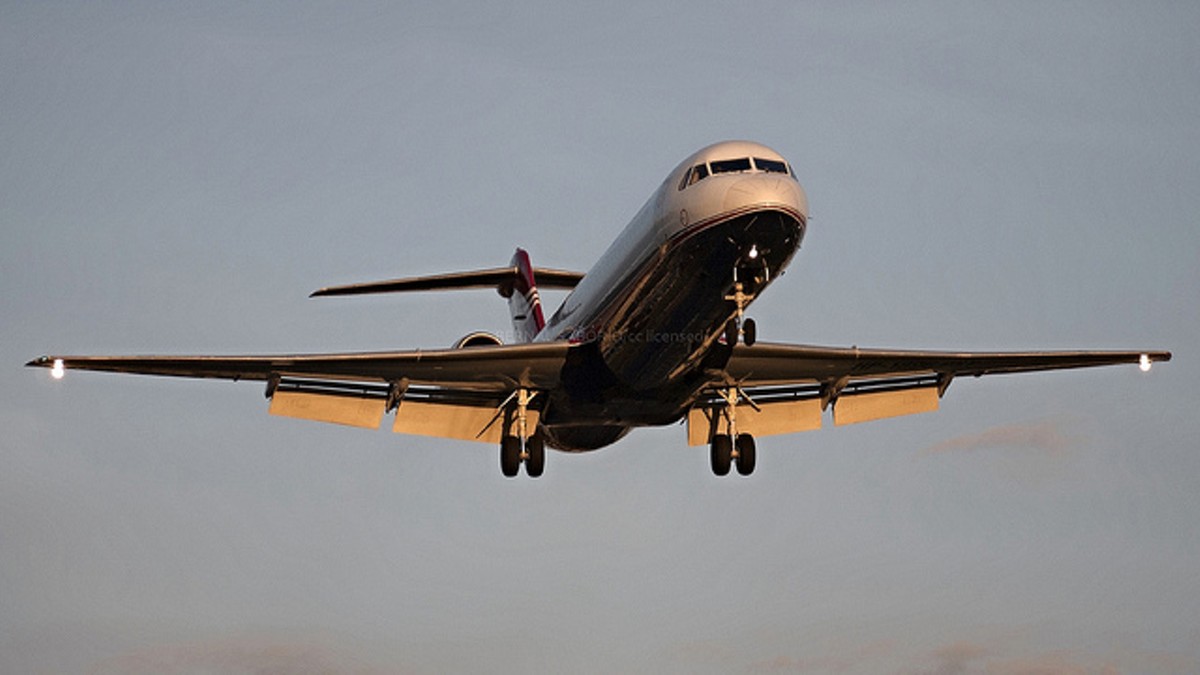The city of St. Louis took generations to topple fully from its peak as one of the nation's biggest cities. It took its airport less than a decade.
In 2000, the airport moved 30 million passengers, making it the 16th busiest in the country. The previous twenty years had seen Lambert-St. Louis International Airport strain under the pressure of its status as a TWA hub, with flights frequently left circling or delayed on the tarmac. Plans were made to build — and then came 9/11, the nationwide air-travel downturn, the Great Recession and airline industry shakeups.
From 2003 to 2004, the number of passengers traveling by air through St. Louis dropped by seven million. In just a few years, daily flight totals plummeted by the hundreds, and those losses were cemented by the elimination of the airport's American Airlines hub in 2009. By the end of the decade, the airport was moving only 40 percent of the traffic it had in 2000 and no longer offered direct service to Europe.
Like St. Louis, whose Gateway Arch serves as a memorial to the myth of non-stop expansion, Lambert Airport, too, has a monument to lost frontier: a 9,000-foot concrete runway, built for $1.1 billion, the most expensive public improvement project in St. Louis history. Planned with the high traffic of the 1980s and '90s in mind, the runway erased a north county neighborhood only to open in 2006 to an industry that suddenly had little use for it. It's currently being used for just 10 percent of arrivals and departures.
As Francis Slay departed Lambert on a warm day last March, the city's mayor would have been able to watch that stretch of concrete shrinking into the distance. Eleven years prior, he had cut the ribbon to open the runway for business. Even then, he'd known far too little was coming.
But maybe it doesn't have to be that way. That possibility propelled Slay to the nation's capital, where on March 22, 2017, he submitted the city's preliminary application to the Federal Aviation Administration's "Airport Privatization Pilot Program" — a program that provides a pathway for publicly owned airports to test the waters of the private sector.
Though Congress created the pilot program in 1997, only two airports have ever completed it, and the first — a small airport in Orange County, New York — reverted to the Port Authority of New York and New Jersey when its private operator cut bait after four years.
Today, the only U.S. commercial service airport run by private means is the Luis Muñoz Marín International Airport in San Juan, Puerto Rico. In 2012, the Puerto Rican government signed a 40-year lease with Aerostar Airport Holdings. For offloading its airport, Puerto Rico got a lump sum of $615 million and the promise of an additional $550 million over the life of the lease. The deal also included a $1.4 billion capital improvement plan.
In 2016, before storms decimated the island last year, the FAA ranked Luis Muñoz Marín as America's 43rd busiest airport. If Lambert, which is 32nd on that list, were to go private, it would be largest American airport to make the leap.
In April, the FAA announced that it was awarding St. Louis one of the five open slots in the pilot program, allowing the city to begin the process of searching for a private operator. The Trump administration, then championing a trillion-dollar infrastructure initiative, cheered the city's first step. "As we've already seen in San Juan," noted Secretary of Transportation Elaine Chao, "this approach to airport management increases productivity, revenue and operating efficiency for airports, creating greater access to capital for infrastructure needs."
St. Louis' new mayor, Lyda Krewson, added her own congratulatory statement, though she offered a more tempered optimism. She called the pilot program "a great opportunity to explore a public private partnership for the airport," adding, "As always, the key is in the details."
Since then, those details have proven scarce, and in their absence suspicion has grown over the matter like a blanket of ivy. Slay's former top lieutenants, who stood alongside him as St. Louis considered the pilot program, are now connected to entities poised to profit from a privately run airport. And Krewson's administration is keeping its cards close to the chest, angering other city lawmakers.
Adding to the ire, the man funding the city's free market exploration is none other than billionaire financier Rex Sinquefield, a figure variously described as either the city's most generous benefactor or its shadiest bogeyman.
The controversy has roiled for months. On one side, lobbyists and city officials insist that all they're advocating for is an informed discussion. On the other, some lawmakers and some airport watchdogs warn that St. Louis is wagering its most valuable asset in a rich man's game.






